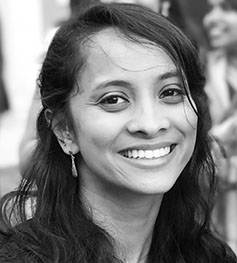Healthcare’s sudden transformation into an online service has come at a cost for many, write Anna Ray, Amy Stevens, and Ahimza Thirunavukarasu
Covid-19 restrictions have rapidly increased society’s reliance on the internet for almost all aspects of life, from food and services, to employment, education, and social support. Crucially, healthcare access has also shifted online. The pandemic has accelerated the telemedicine revolution, much faster than the NHS Long Term Plan anticipated. Remote consultations and online registration now dominate primary care and outpatient services. This swift uptake of technology has been critical to continuing healthcare provision during the crisis, and the legacy of this transformation will likely outlive the control measures that triggered it.
These changes have, however, come at a cost for many. Digital exclusion has been falling recently but even in 2018, 10% of the UK adult population had never or not used the internet in the past three months. A person may be digitally excluded because they cannot access or afford devices, data, or WiFi, or because they do not possess the necessary skills.
Digital exclusion is significantly influenced by income, language, literacy, culture, and ethnicity. For these reasons excluded populations, including migrants living in vulnerable circumstances; Gypsy, Roma, and Traveller communities; and people experiencing homlessness are at particular risk of adverse health outcomes as a result of the digital divide. Working with Doctors of the World (DOTW) UK, we undertook a rapid needs assessment (RNA) exploring the impact of covid-19 on these and other excluded groups. A consistent theme from our interviews was the degree to which digital exclusion had worsened their experiences during the pandemic.
Many people we spoke to for the RNA cannot afford regular phone credit or internet data. Those able to afford to call a healthcare provider when they are unwell described how call waiting times and long phone consultations quickly drain their credit, with some people dropping from calls as a result. Waiting to connect to an interpreter can be particularly time consuming and expensive. Remote consultations feel out of reach for many, for whom there is often no clear alternative.
Social connection during lockdown is particularly difficult for people living in vulnerable circumstances who are also experiencing digital exclusion. Many, especially those with a history of traumatic experiences, previously relied on daily interactions with their support networks for maintaining their mental health. As the majority of society have turned to the internet to stay socially connected, not all have had this opportunity. Several people we spoke to for the RNA reported increased anxiety, depression, and deterioration of existing mental health problems as a consequence of this isolation.
The inability to access up to date digitally disseminated government guidance on covid-19 left many people fearful about the virus and uncertain how to protect themselves or seek medical support. Reliance on information by word of mouth exposes some to inaccurate information that could put them at increased risk of exposure and/or adverse health outcomes. A lack of information can be particularly damaging for people whose living conditions add additional complexities to following guidance, such as limited access to water and sanitation or residing in crowded shared accommodation.
Digital exclusion’s impact on health is unquestionable. With the acceleration of technological advancement, policy commitments within the NHS Long Term Plan aimed at supporting digital inclusion must be realised, with focus placed on the needs of people who are most socially excluded.
An urgent first step is to correct the effects of exclusion by making small changes to how services operate. Health services can offer a call-back service or freephone numbers, especially where there are long waiting times or interpretation services are needed. Face to face healthcare provision and alternatives to online registration should be prioritised for people who are digitally excluded. Services can designate space within their premises to provide access to phones and remote consultations. Accessible information summarising important changes in health guidance can be posted out to people who are unlikely to receive it through other means.
Digital exclusion must also be addressed by the wider system and health professionals have a key role in advocating for more inclusive policies. The government must consider internet access as a basic need, accounting for this in their provision of financial and housing support. For example, asylum support rates should be raised to take account of the cost of access to digital technologies, which have become a basic necessity. Improving access to WiFi, telephones, and digital skills training should be a government and third sector priority. Mobile phone and broadband service providers must be persuaded to prioritise the digitally excluded in their provision of free data, WiFi, and phone credit during the pandemic.
Increased digitisation undoubtedly has many advantages. Nevertheless, we all have a responsibility to ensure that these steps forward do not leave some people further behind.
 Anna Ray is a public health specialty registrar with the Yorkshire and the Humber Deanery. She has a special interest in global public health.
Anna Ray is a public health specialty registrar with the Yorkshire and the Humber Deanery. She has a special interest in global public health.
Competing interests: None declared.
 Amy Stevens is a public health specialty registrar with the Yorkshire and the Humber Deanery. She has a special interest in migrant health and health inequalities.
Amy Stevens is a public health specialty registrar with the Yorkshire and the Humber Deanery. She has a special interest in migrant health and health inequalities.
Competing interests: None declared.
 Ahimza Thirunavukarasu is a public health specialty registrar with the London & South East Deanery. She has a special interest in health inequalities and sexual and reproductive health.
Ahimza Thirunavukarasu is a public health specialty registrar with the London & South East Deanery. She has a special interest in health inequalities and sexual and reproductive health.
Competing interests: None declared.
This article was written with the approval of Doctors of the World UK (DOTW).
